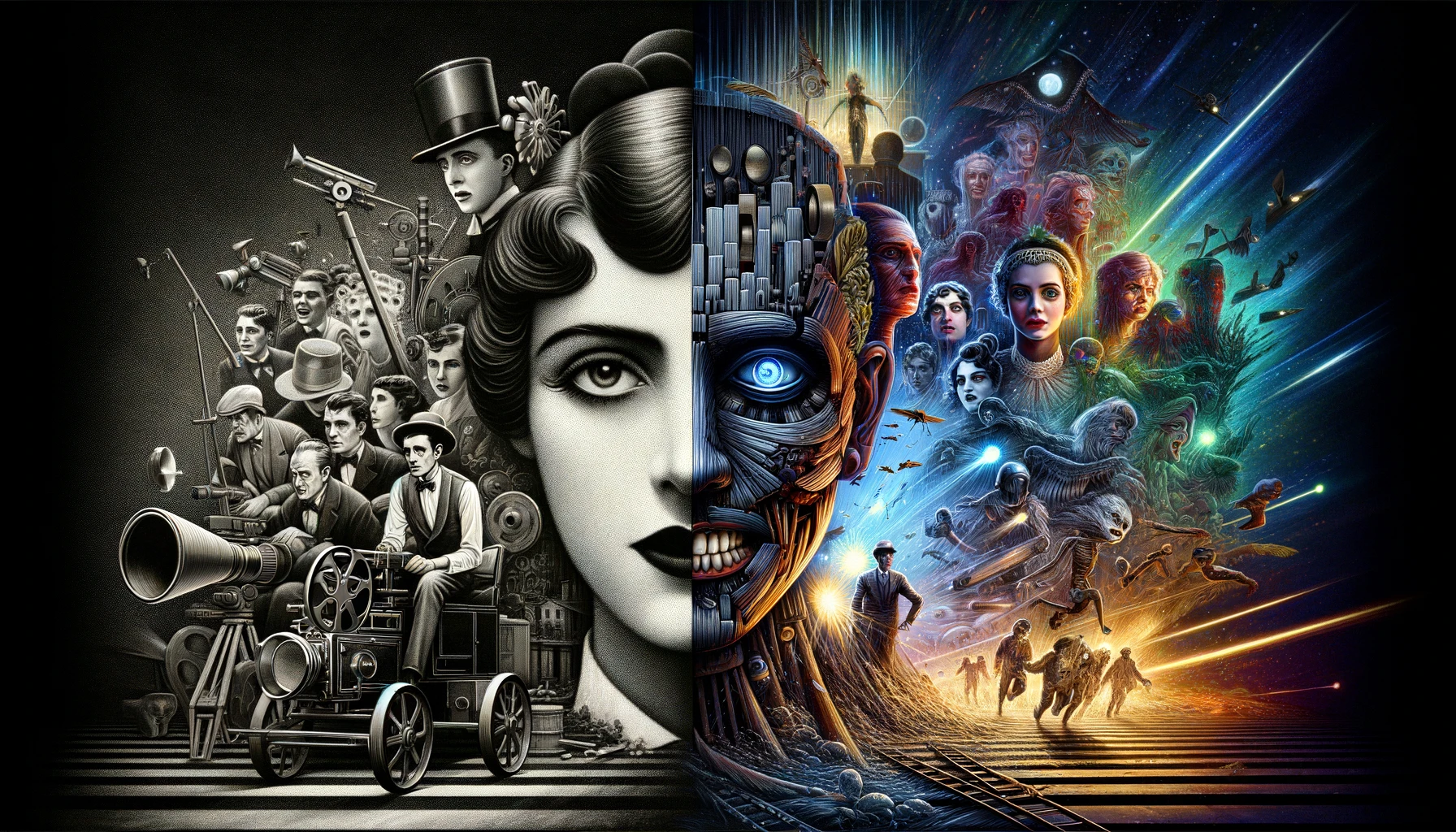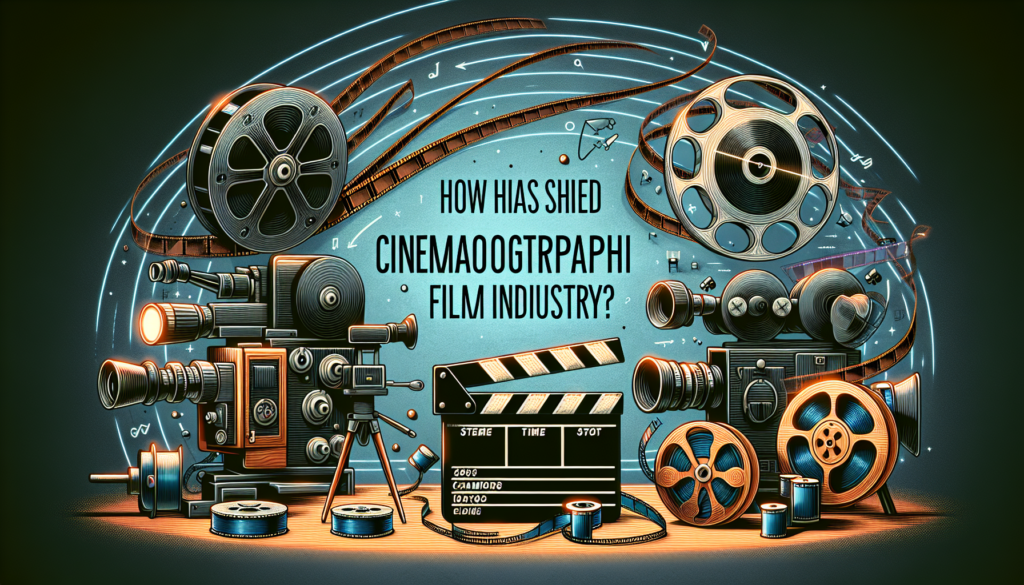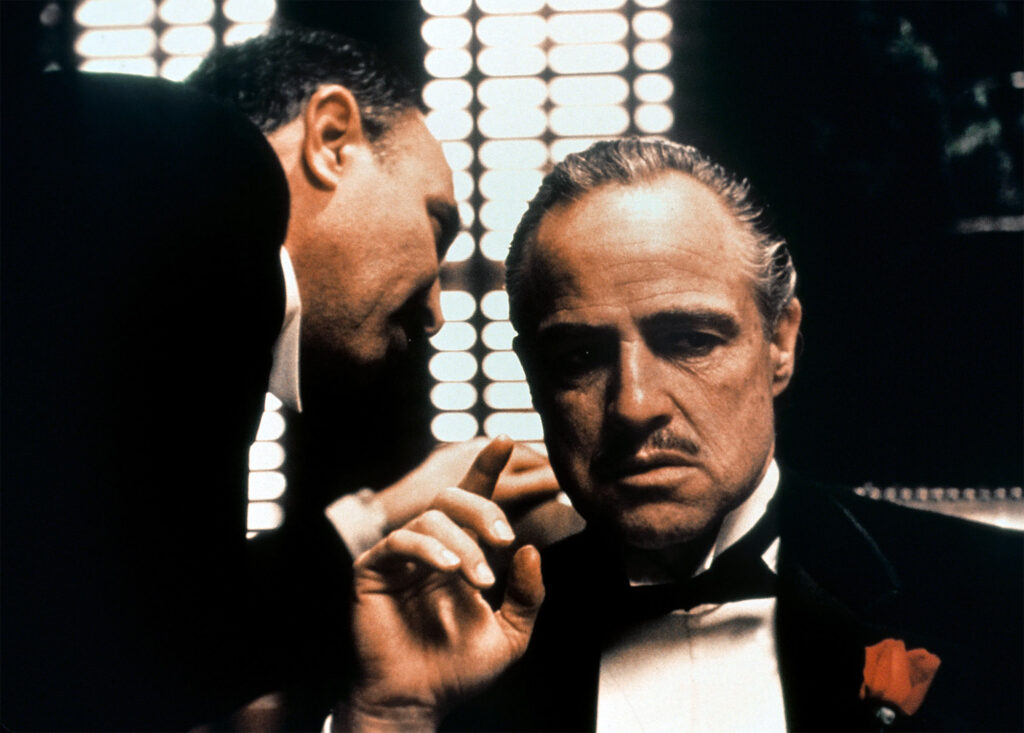The art and science of cinematography dates far back to the late 19th century when moving images were first invented. From rudimentary black and white stills, silent narratives to advanced Computer-Generated Imagery (CGI) and immersive 3D films, cinematography has experienced rigorous transformation enhancing the way stories are told and making movie watching more engaging and delightful.
This began with the use of silent films, the earliest of cinematography, where stories were visualized without the addition of sound. Instead of dialogues, these films relied heavily on expressions, visual cues and intertitles to narrate the story. In essence, silent films presented a unique blend of literature, theatre and photography. One exceptional example of this artistic period is Charlie Chaplin‘s “The Gold Rush” of 1925. Despite having no spoken dialogue, the film beautifully unwrapped the complexities of life, love, and other universals themes captivated the audience and set a significant footprint in the history of cinema.
In the late 1920s, ‘The Jazz Singer‘, which was the first talkie film, revolutionized cinema by introducing synchronized sound. It heralded an era where dialogue, sound effects, and music became critical components of storytelling. These ‘talkie’ films offered filmmakers a new narrative canvas, expanding the cinematic world beyond the limitations of pantomime and intertitles, and initiating the golden era of cinema.
The evolution in cinematography continued with the introduction of color films. Until the 1930’s, movies were predominantly black and white. But with the release of films like ‘The Wizard of Oz‘ and ‘Gone with the Wind‘ in the late 1930s, color was woven into the narrative, making the scenes sprout to life with a vibrant display of emotions. However, it wasn’t until the 1960s that color films gained popularity and became mainstream.
Another significant evolution of cinematography came with the development of special effects. Beginning with basic light and mirror tricks, the industry rapidly advanced with blue/green screen methods, allowing us to superimpose characters onto fantastical landscapes. The legendary ‘Star Wars‘ saga pioneered many special effects techniques, including extensive model work and the use of blue screens, influencing filmmakers for generations to follow.
The most revolutionary cinematographical development yet is the integration of Computer-Generated Imagery (CGI). The seminal film in this regard is undoubtedly Jurassic Park, which stunned audiences worldwide with its breathtakingly realistic depiction of prehistoric creatures. Today, CGI is an integral part of contemporary cinema, creating lifelike animations, mind-boggling visuals, and enabling the creation of fully digital worlds.
Contributing to this technological revolution was the advent of 3D cinematography which has added a new immersive dimension to films. Spearheaded by films like ‘Avatar‘, 3D technology manipulates our depth perception to create an illusion of three-dimensional space, enhancing the cinematic experience.
And now, we stand at the brink of another revolutionary wave with the emergence of Virtual Reality (VR) and Augmented Reality (AR) in cinematography. These new technologies promise to make cinema more interactive and customize storytelling in ways never imagined before.
Looking back at the evolution of cinematography, one cannot help but marvel at the journey from silent films to the exciting future of AR and VR. Despite the many changes and advancements, the core purpose of cinema remains the same – to tell compelling stories. The technological advancements simply provide new tools to artists, pushing the boundaries of what is possible, and continuing the evolution of this powerful medium of storytelling.
The future of cinematography will undoubtedly bring more innovations, enabling filmmakers to immerse us even further into the intriguing world of motion picture. As audiences, we eagerly await the unexpected shifts and turns this evolution journey will unfold while preserving the sanctity and emotional power of storytelling. After all, isn’t that what cinema is all about?



